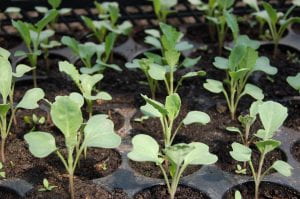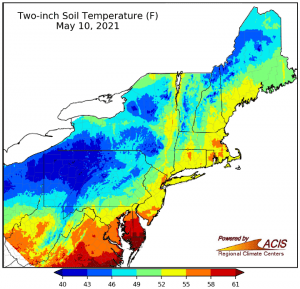by Steve Reiners, Professor, Horticulture, Cornell University, Cornell AgriTech
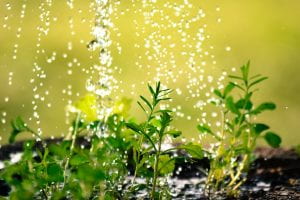 This spring has gone from dry to wet and back to dry, which can be frustrating for growers. If you have been able to get your fields planted, it can sometimes be confusing in terms of when to water and for how long.
This spring has gone from dry to wet and back to dry, which can be frustrating for growers. If you have been able to get your fields planted, it can sometimes be confusing in terms of when to water and for how long.
As soon as seeds germinate and plants break through the soil surface, it’s time to water more deeply. Same is true after transplanting. Shallow watering encourages shallow rooting and makes the plants more vulnerable to drought .
Deep watering will encourage roots to “follow the water” leading to deeper roots and more productive plants. To sum up your basic watering strategy: Water less often, but longer when you do.
If growing outdoors, it’s easy enough to keep a water budget. At this time of the year, apply at least 1/3 of an inch of water at least two to three times per week if it doesn’t rain. As plants grow and temperatures warm, increase the watering to 1/3 of an inch three to four times per week. Keep a rain gauge in your field and measure your rainfall.
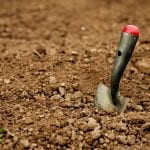 You can also ‘feel’ your soil to see when it may be time to water. Pick some up and try rolling it into a ball. If you can, the soil is moist enough. Or put your finger in the soil or dig down with a hand trowel. Is it dry more than two inches deep? Then it’s time to water.
You can also ‘feel’ your soil to see when it may be time to water. Pick some up and try rolling it into a ball. If you can, the soil is moist enough. Or put your finger in the soil or dig down with a hand trowel. Is it dry more than two inches deep? Then it’s time to water.
Some commercial growers will purchase equipment like tensiometers which estimates soil moisture at various depths. When a certain level of dryness is reached, irrigation starts.
If water access is limited, look at the chart below to determine the critical time to water a particular crop. Focus your irrigation efforts on crops in these stages.
Table 1. Critical irrigation periods for vegetable crops
| Crop | Critical Stage for moisture stress |
| Asparagus | Fern growth |
| Beans | Flowering, Pod fill |
| Broccoli, Cabbage, Cauliflower | Establishment and head filling |
| Carrot | Establishment and root development |
| Cucumber, melon, pumpkin, squash | Flowering and fruit enlargement |
| Eggplant | Flowering and fruit development |
| Lettuce | Head development |
| Onion | Bulb enlargement |
| Pea | Flowering, Pod fill |
| Pepper | Transplanting, fruit set and development |
| Sweet Corn | Tassel, silk, ear fill |
| Tomato | Flowering, fruit set, enlargement |
An inch of water on an acre is a lot of gallons – 27,000 to be exact. So, if watering only with a third of an inch you need 9,000 gallons. On a smaller scale, a 100 square foot garden requires 70 gallons for one inch of water.
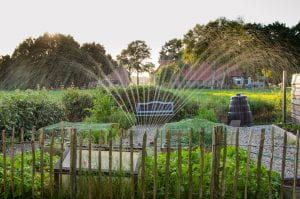 Overhead irrigation is easy to use and can water large areas at one time. Unfortunately, it also wets the leaves. And as any plant pathologist will tell you, wet leaves equal disease. Pathogens spread easily when plants are wet. So, if you can, water in the morning so that leaves can dry through the day. Watering in the evening assures a long period of leaf wetness, practically guaranteeing disease.
Overhead irrigation is easy to use and can water large areas at one time. Unfortunately, it also wets the leaves. And as any plant pathologist will tell you, wet leaves equal disease. Pathogens spread easily when plants are wet. So, if you can, water in the morning so that leaves can dry through the day. Watering in the evening assures a long period of leaf wetness, practically guaranteeing disease.
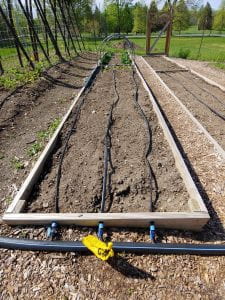
Trickle or drip irrigation is an effective alternative to overhead irrigation. These systems apply water slowly through perforated tubes laid directly on the soil, which decreases the amount of water needed by 50 percent or more. Little water is lost to evaporation as it is uniformly applied slowly right at the roots. Leaves remain dry, diseases are reduced, and you can water at any time, day or night, whatever fits your schedule. You can even water while working in the garden.

